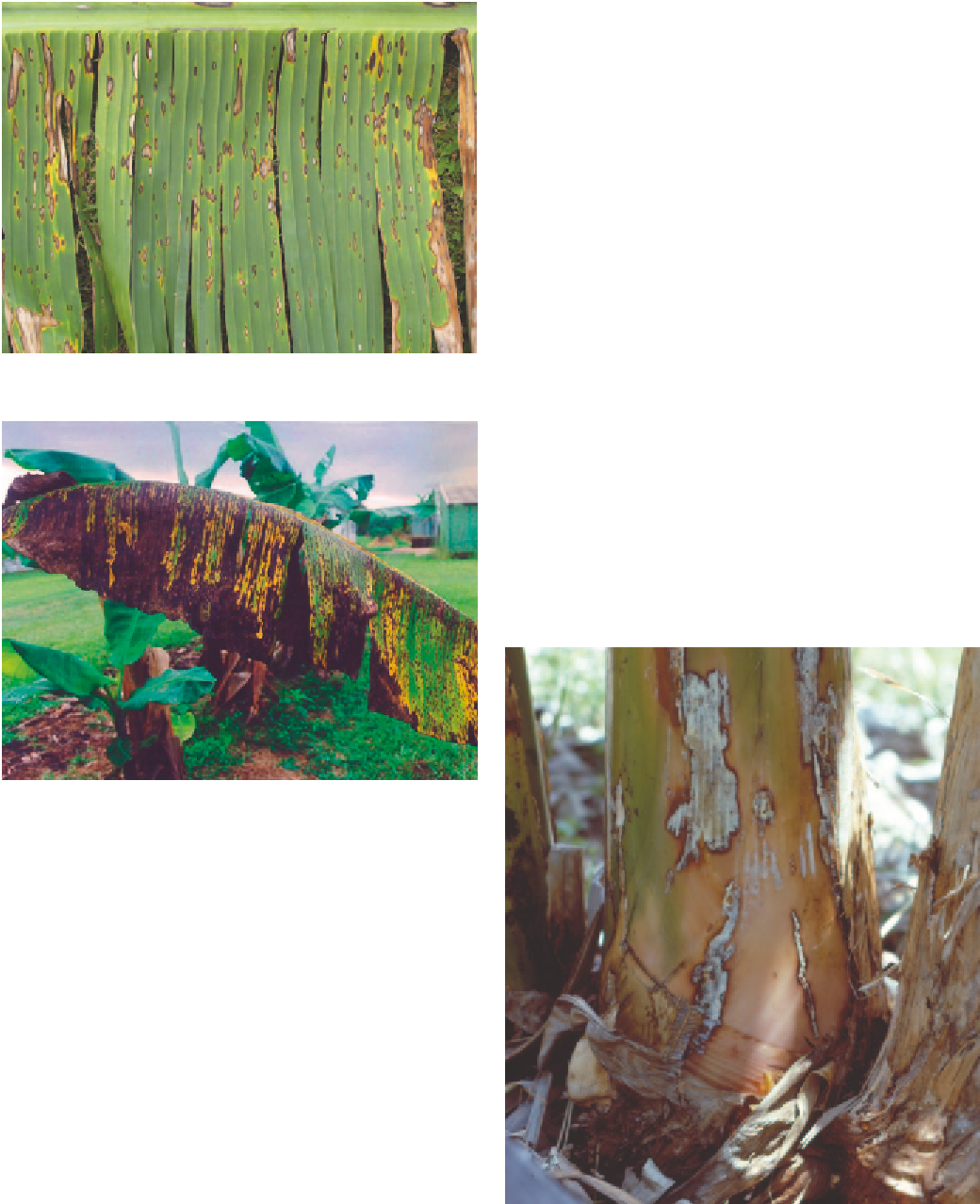Agriculture Reference
In-Depth Information
Management
•
Apply the recommended fungicides. Remove and destroy
badly spotted leaves and trash from plants.
Remove or spray neglected plantations.
•
MARASMIELLUS ROT
■
Cause
The fungus
Marasmiellus inoderma
.
Symptoms
Withering, death and eventual decay of leaf sheaths occur
with a conspicuous white fungal growth on affected areas.
New leaves are slow to emerge and roots may be killed. Pale
yellow to brown mushrooms (caps have widely separated
gills) with white stalks develop at soil level and on the
surface of the pseudostem in wet weather.
Fig 5.43 Moderate symptoms of yellow Sigatoka.
Source of infection and spread
The fungus is a common organism on decaying banana
trash, but may also be found on weakened corms. It attacks
plants stressed by adverse growing conditions, particularly
drought. The disease is generally confined to poor soils.
Fig 5.44 Severe symptoms of yellow Sigatoka on a banana leaf.
December to March; in north Queensland, the disease
occurs throughout the year.
Another type of spore (ascospore) develops inside old
lesions and spreads by wind to establish new infections.
Ascospore infection results in tip-spotting of young, fully
expanded leaves. This contrasts with the conidial
infections, which can cause line spotting or scattered
infection. Hot, humid weather and established leaf spot
allow rapid disease development. Under these conditions,
leaf spot appears on progressively younger leaves, and
disease control becomes increasingly difficult.
Importance
Yellow Sigatoka is a major disease of commercial Cavendish
banana, particularly in north Queensland where weather
conditions favour the disease.
Fig 5.45 Marasmiellus rot showing the typical white fungal growth
on infected areas.












